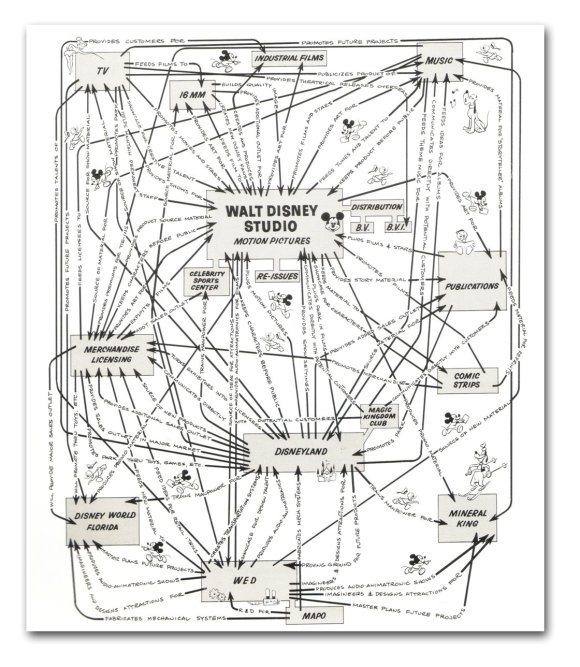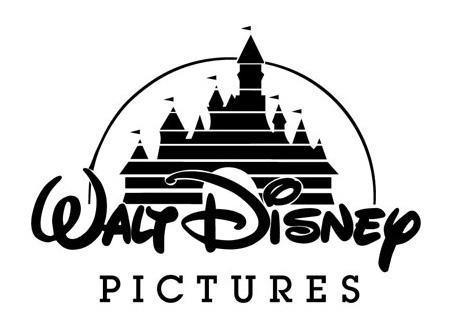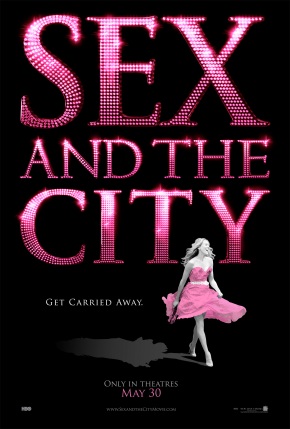Synergy is an aspect that many conglomerates use to promote their products without the public knowing it. Synergy is when a conglomerates subsidiary’s promotes a product owned by the company themselves. Disney is a great example because they are one of the first ones to really incorporate synergy. Disney’s major theme parks are all used as large-scale advertising tools. The park uses the characters from the movies to promote the parks and uses the parks to promote the movies. The multiple theme parks sell an absurd amount of merchandise. There is a diagram here created by Disney that explains all their synergy strategies.
As time went by Disney started to buy other companies. Particularly media company’s which opened the doors up to vast amounts of new ways to use synergy. Disney released a new take on The Princess and The Frog in 2009. Main actress Anika Noni Rose featured in an interview with on the View, a popular American chat show. The View airs on the American channel ABC, which was bought by Disney in 1996. This is an example of synergy people wouldn’t realise without looking at the media company’s history.
Another example of Disney’s clever synergy is that The Pirates of The Caribbean movies are actually based on a Disney ride. Disney makes a movie from a Disney ride, and then advertises it by using a Disney owned company. Johnny Depp is the main character of the film and ABC news did an interview with him talking about the release of the second movie.
For most people they would not know that Disney owns ABC. Americans watch ABC for news, they do not think about what media conglomerate owns the company. Many think they are a conglomerate themselves. That is just not the case for most companies though. Most conglomerates like Disney have many subsidiaries. It is easy for a company to promote a product through their subsidiary. They have a lot of leeway on how much a product is discussed; they can talk about the new Disney film as if it’s the best movie ever. ABC is a credible source; Disney itself can’t promote their movie as big as ABC can and get away with it.
With Disney owning so many media subsidiaries, it’s no wonder that Disney owns a company capable of dominating the box office. Pixar’s synergy with Disney is probably the most successful example anyone could find, with over 10 full feature animated films, and all of these films reaching over a worldwide gross of $360,000,000, reaching an average worldwide gross across all films released by the Pixar/Disney pairing to a sum of $557,250,519. The numbers speak for themselves, the union between Pixar and Disney have been an incredibly successful business strategy played out by Disney, and financially a hugely profitable move. If all the budgets of each Pixar/Disney film were added together it would reach a grand total of $1,441,000,000. This might seem like a lot over the course of 18 years, but the gross total of all these of these releases combined reaches a staggering total of $7,244,256,747, reaching a gross profit of $5,893,256,747. Just as a visual aid, here is a list of the top ten highest grossing Pixar films worldwide.
10. Cars (2006) $462 million
9. Toy Story 2 (1999) $485 million
8. WALL-E (2008) $521.3 million
7. Monsters, Inc. (2001) $525.4 million
6. Cars 2 (2011) $559.9 million
5. Ratatouille (2007) $623.7 million
4. The Incredibles (2004) $631.4 million
3. Up (2009) $731.3 million
2. Finding Nemo (2003) $867.9 million
1. Toy Story 3 (2010) $1,063.2 million









